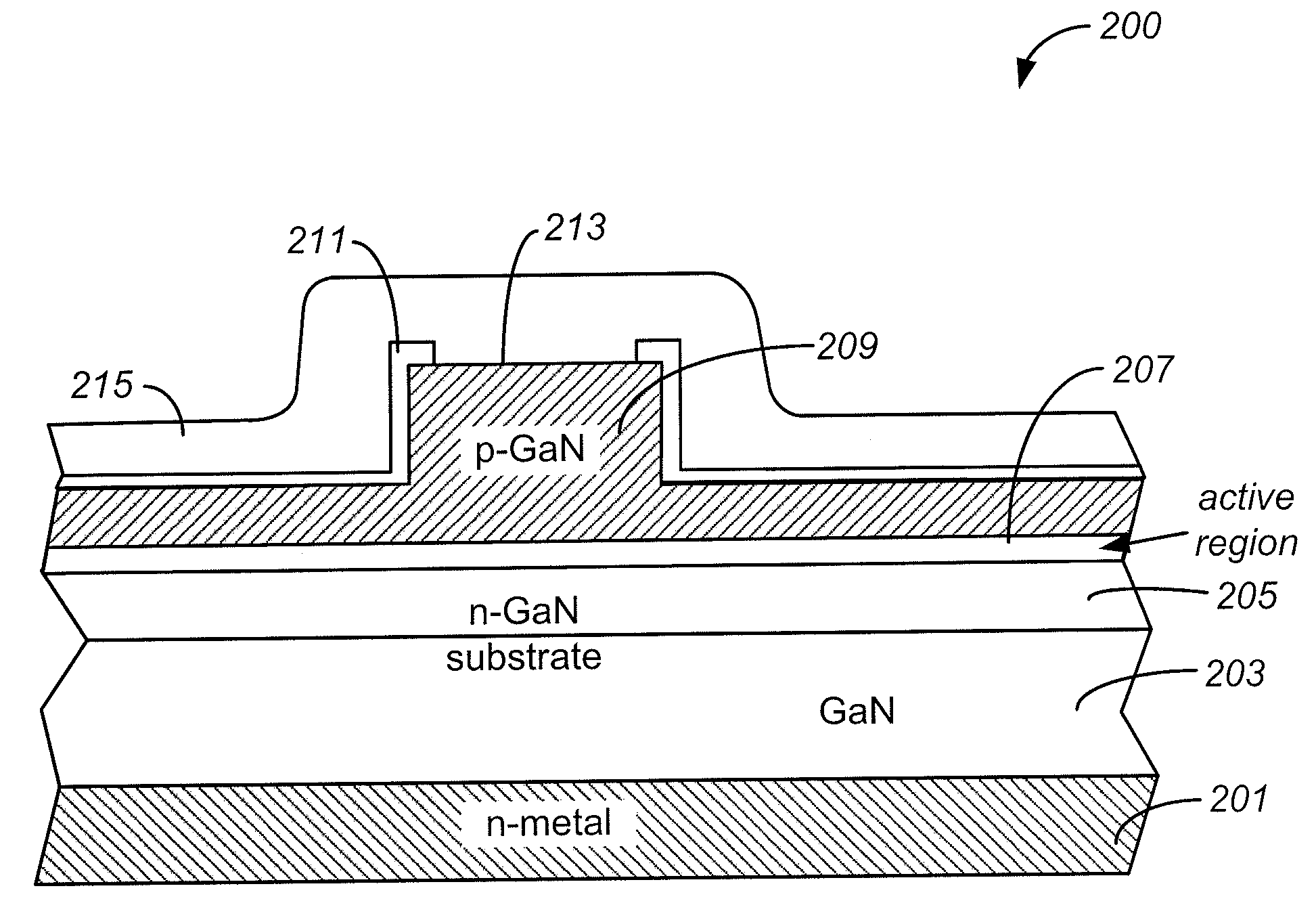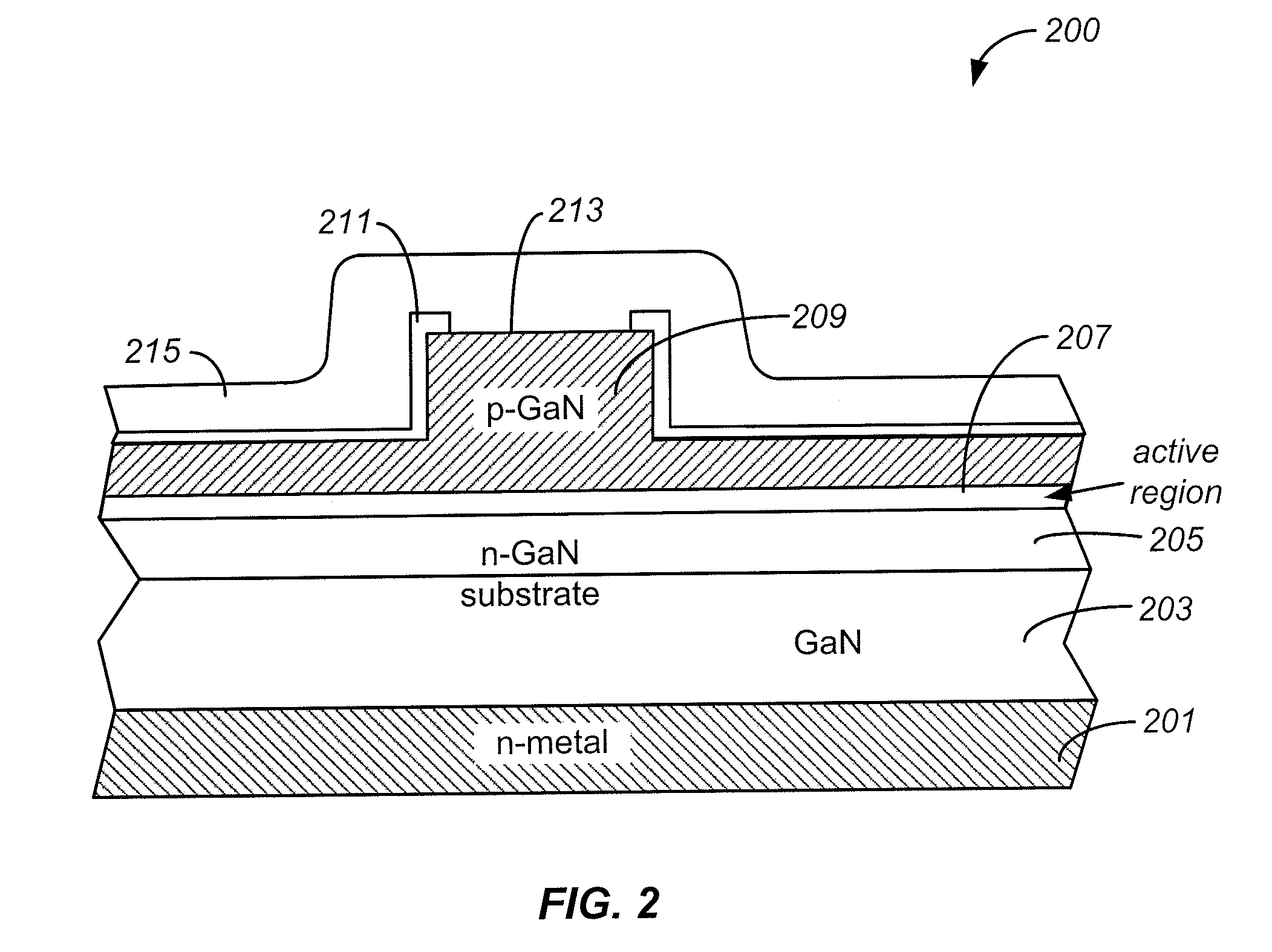Method of Fabricating Optical Devices Using Laser Treatment
a laser treatment and optical device technology, applied in the field of optical devices, can solve the problems of inconvenient laser treatment, large size, weight, and cost of conventional light bulbs, and achieve the effects of improving contact, simple and cost effective, and reducing the cost of laser treatmen
- Summary
- Abstract
- Description
- Claims
- Application Information
AI Technical Summary
Benefits of technology
Problems solved by technology
Method used
Image
Examples
example
[0108]FIGS. 19, 20(A), and 20(B) are simplified diagram illustrating experimental results of a laser scribing process for contact formation according to one or more examples of the present invention. These diagrams are merely illustrations and should not unduly limit the scope of the claims herein. One of ordinary skill in the art would recognize other variations, modifications, and alternatives.
[0109]FIG. 19 shows an IV curve from a set of Transmission Line Models (TLM's) that were fabricated on top of 4 different GaN backside surfaces: lapped, lapped and laser scribed, lapped and polished, and lapped, polished and laser scribed. As used herein, TLM stands for Transmission Line Model, which is a measure technique for resistance of contacts along with the sheet resistance of the one or more materials having the deposited metallization contacts. Typically the measurements are performed by varying the distances between the two metal contacts and plotting resistance versus distance of ...
PUM
 Login to View More
Login to View More Abstract
Description
Claims
Application Information
 Login to View More
Login to View More - R&D
- Intellectual Property
- Life Sciences
- Materials
- Tech Scout
- Unparalleled Data Quality
- Higher Quality Content
- 60% Fewer Hallucinations
Browse by: Latest US Patents, China's latest patents, Technical Efficacy Thesaurus, Application Domain, Technology Topic, Popular Technical Reports.
© 2025 PatSnap. All rights reserved.Legal|Privacy policy|Modern Slavery Act Transparency Statement|Sitemap|About US| Contact US: help@patsnap.com



